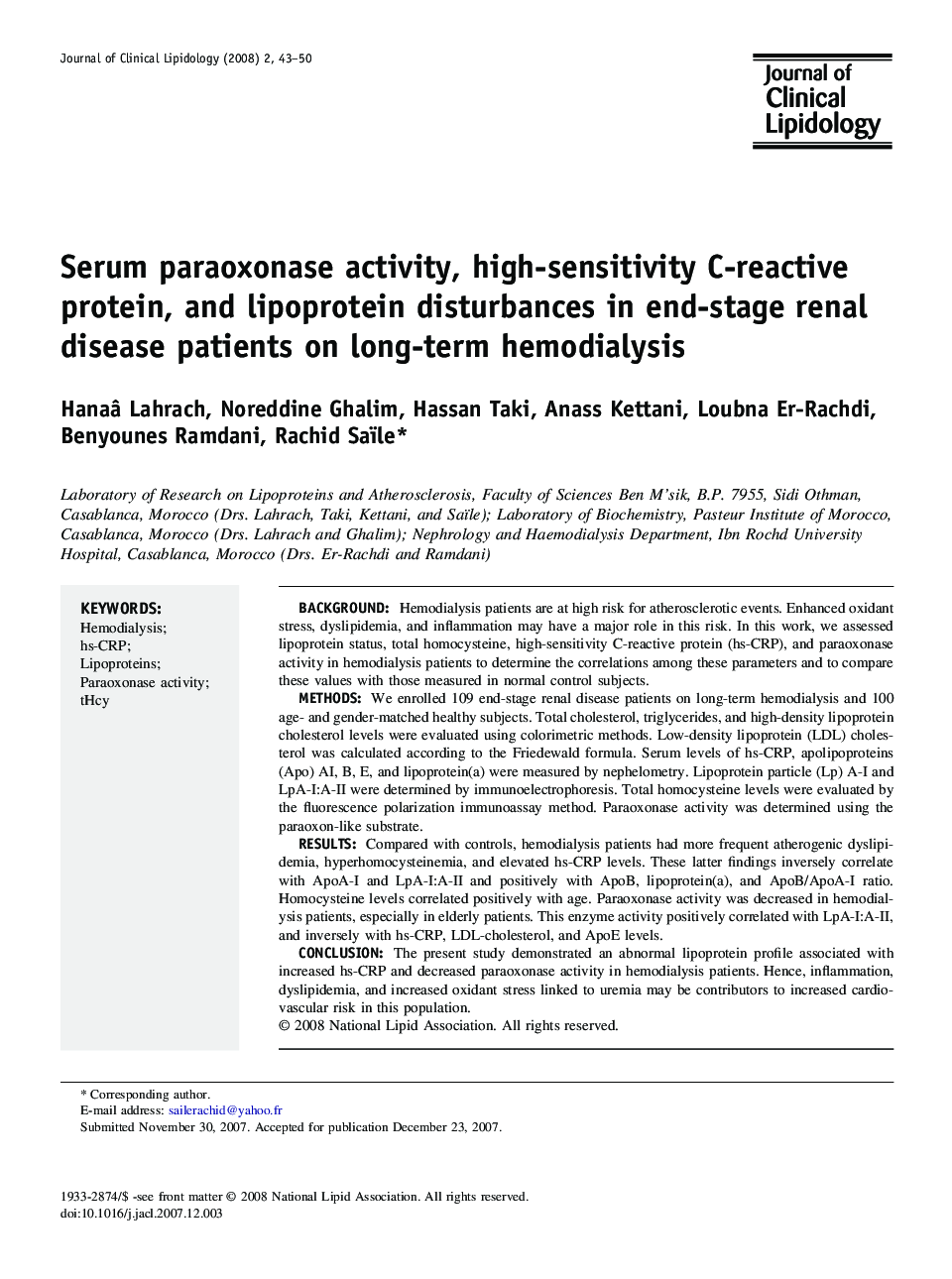| کد مقاله | کد نشریه | سال انتشار | مقاله انگلیسی | نسخه تمام متن |
|---|---|---|---|---|
| 2966968 | 1178823 | 2008 | 8 صفحه PDF | دانلود رایگان |

BackgroundHemodialysis patients are at high risk for atherosclerotic events. Enhanced oxidant stress, dyslipidemia, and inflammation may have a major role in this risk. In this work, we assessed lipoprotein status, total homocysteine, high-sensitivity C-reactive protein (hs-CRP), and paraoxonase activity in hemodialysis patients to determine the correlations among these parameters and to compare these values with those measured in normal control subjects.MethodsWe enrolled 109 end-stage renal disease patients on long-term hemodialysis and 100 age- and gender-matched healthy subjects. Total cholesterol, triglycerides, and high-density lipoprotein cholesterol levels were evaluated using colorimetric methods. Low-density lipoprotein (LDL) cholesterol was calculated according to the Friedewald formula. Serum levels of hs-CRP, apolipoproteins (Apo) AI, B, E, and lipoprotein(a) were measured by nephelometry. Lipoprotein particle (Lp) A-I and LpA-I:A-II were determined by immunoelectrophoresis. Total homocysteine levels were evaluated by the fluorescence polarization immunoassay method. Paraoxonase activity was determined using the paraoxon-like substrate.ResultsCompared with controls, hemodialysis patients had more frequent atherogenic dyslipidemia, hyperhomocysteinemia, and elevated hs-CRP levels. These latter findings inversely correlate with ApoA-I and LpA-I:A-II and positively with ApoB, lipoprotein(a), and ApoB/ApoA-I ratio. Homocysteine levels correlated positively with age. Paraoxonase activity was decreased in hemodialysis patients, especially in elderly patients. This enzyme activity positively correlated with LpA-I:A-II, and inversely with hs-CRP, LDL-cholesterol, and ApoE levels.ConclusionThe present study demonstrated an abnormal lipoprotein profile associated with increased hs-CRP and decreased paraoxonase activity in hemodialysis patients. Hence, inflammation, dyslipidemia, and increased oxidant stress linked to uremia may be contributors to increased cardiovascular risk in this population.
Journal: Journal of Clinical Lipidology - Volume 2, Issue 1, February 2008, Pages 43–50